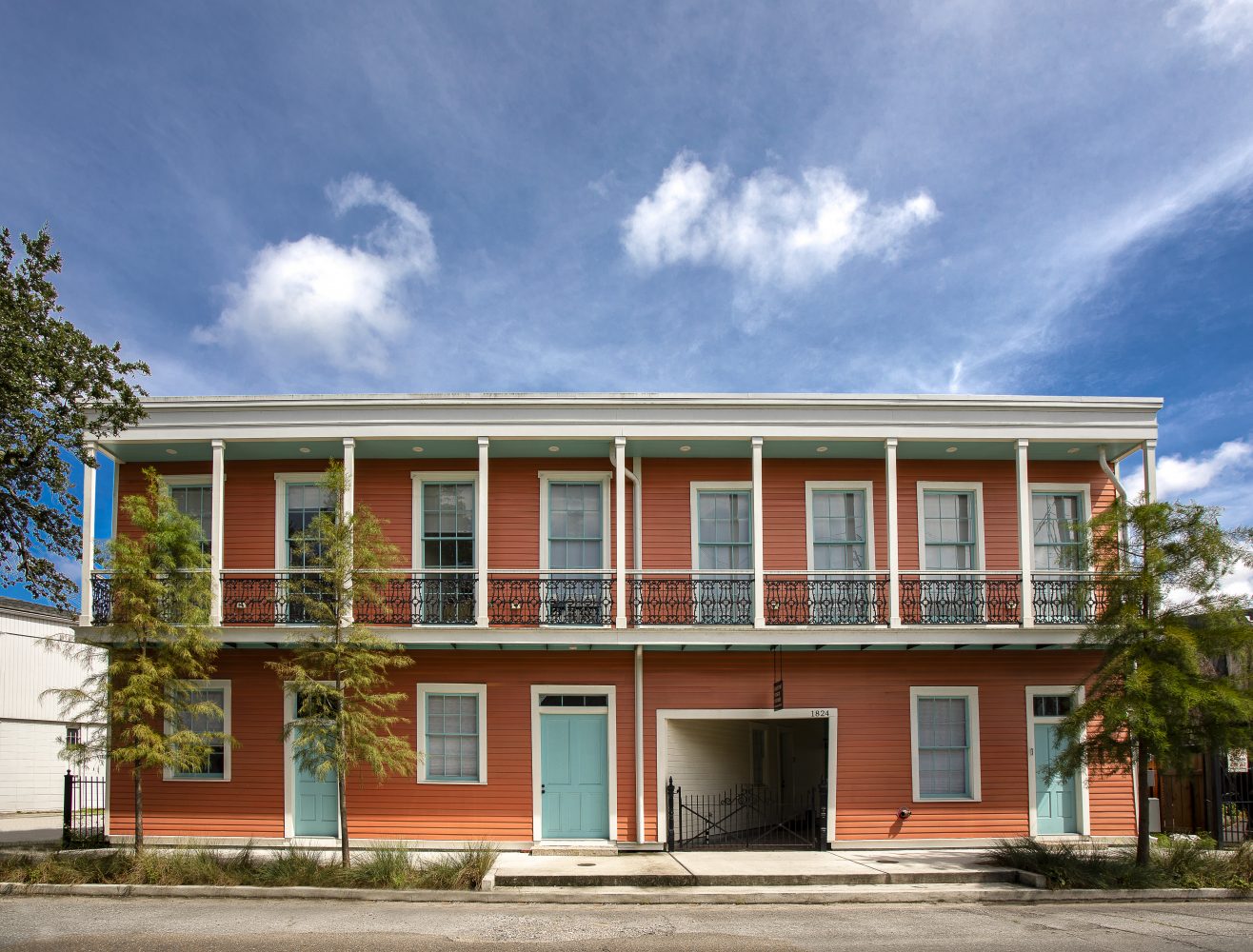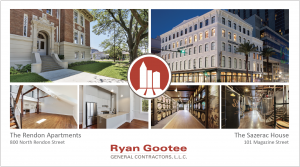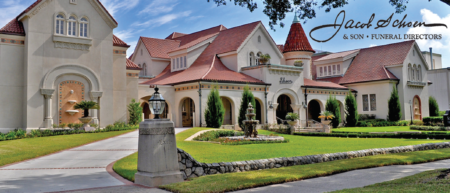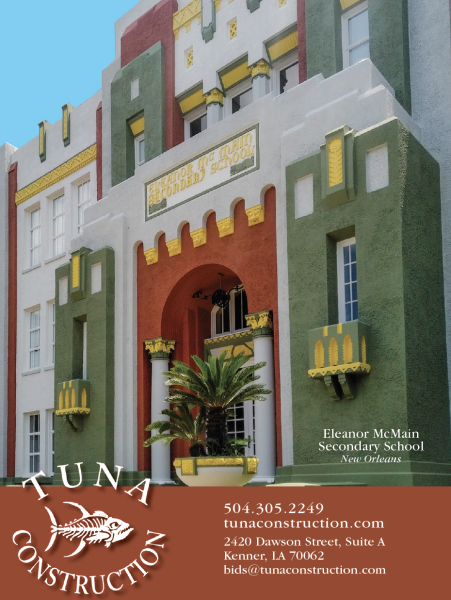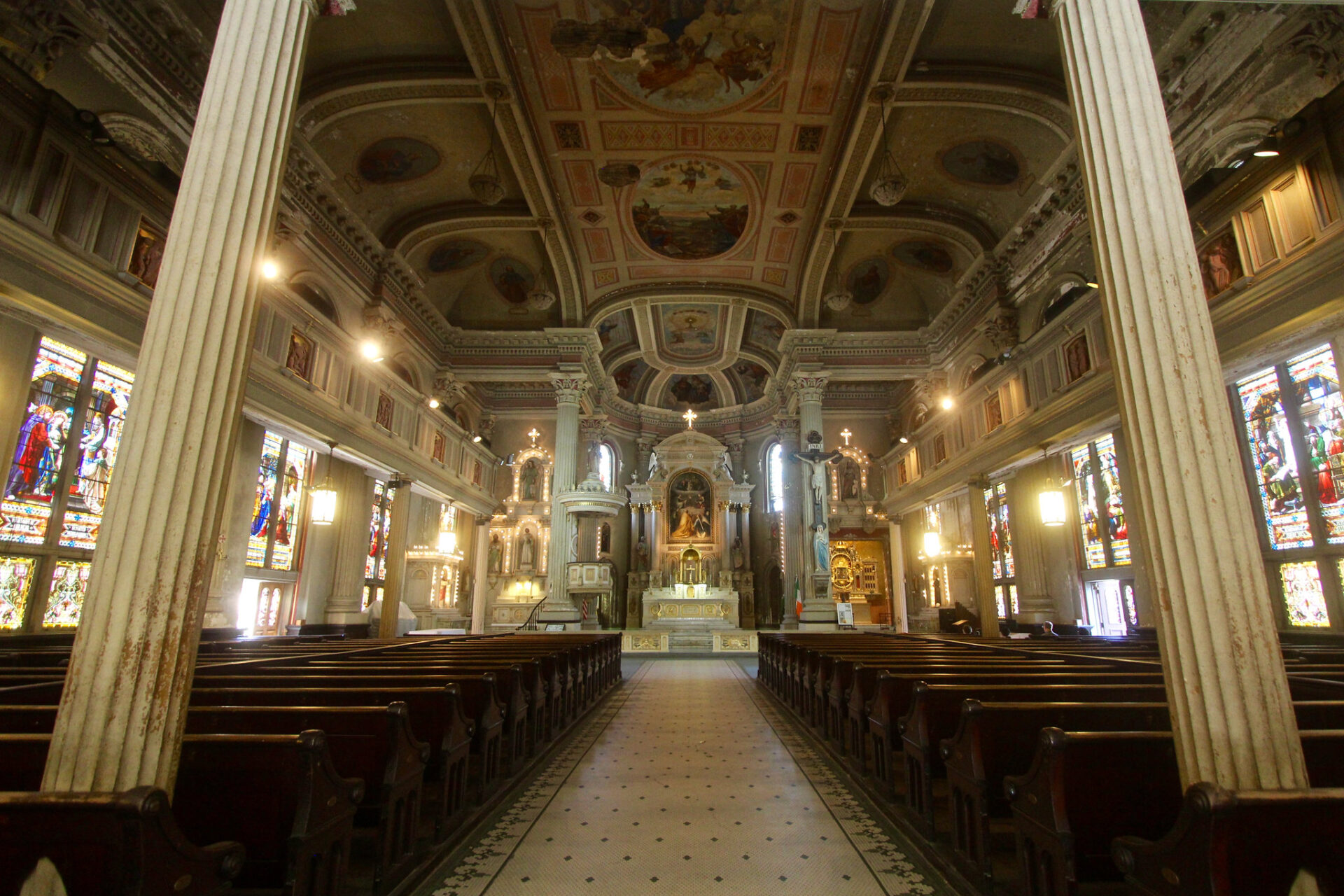This story appeared in the October issue of PRC’s Preservation in Print magazine. Interested in getting more preservation stories like this delivered to your door nine times a year? Become a member of the PRC for a subscription!
Buildings tell stories. Learning to “read” buildings is one of the joys of preservation, allowing the studious eye to discern original details from subsequent additions and to assign their likely age based on form, style and materials. Buildings also have backstories. Who designed and built them? Who lived or worked there? And who kept them standing?
When buildings fall into disuse, they soon fall into disrepair — all the more so in New Orleans, where storms, termites and subsidence seemingly conspire against even well-made structures. Sometimes saving a damaged building takes vision; saying no to demolition takes conviction, especially when blighted property is involved.
Here’s a look at some preservation wins that could easily have gone the other way. Each of the following buildings was once proposed for demolition but ended up being spared the wrecking ball. Thankfully someone — city official, neighbor, developer — had the conviction to pen a new chapter of these buildings’ stories.
Advertisement
(AT FRANKLIN AVENUE)
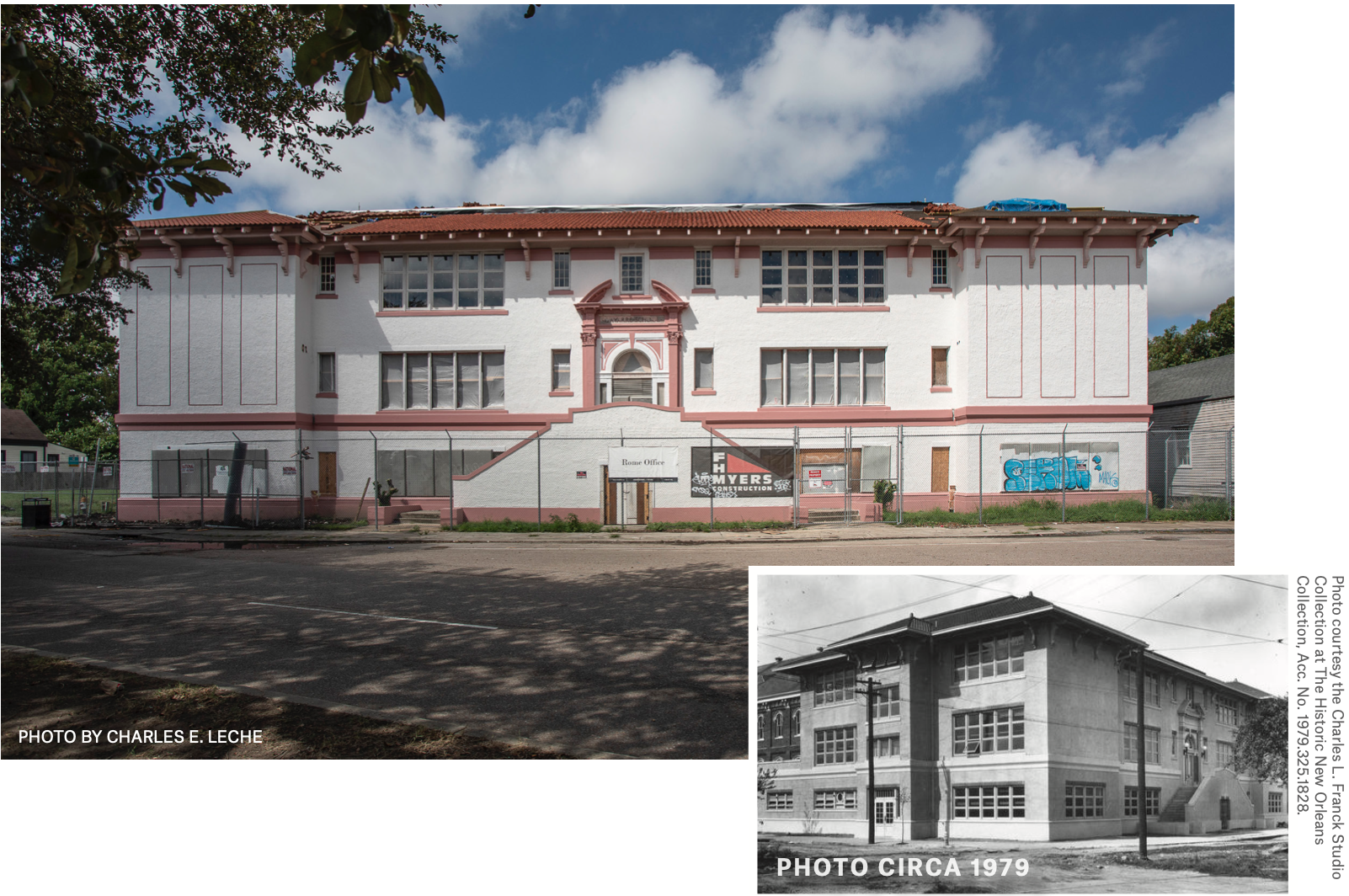
THREAT:
After purchasing this vacant school building at auction, investors applied for a demolition permit in 2016 with plans to build a shopping center at the site.
STATUS:
Under renovation for a senior citizen housing development.
STORY:
Designed by architect E.A. Christy in 1921, the Charles E. Gayarre Elementary School was named for a 19th-century attorney and Louisiana historian. In 1995, it was renamed to honor Civil Rights organizer Oretha Castle Haley. Declared surplus by the Orleans Parish School Board, the building was auctioned in 2013. This cleared the path to its nomination as a local landmark. (City owned buildings are not eligible.) Demolition requests for buildings that have landmark status must be approved by the Historic District Landmarks Commission. When the commission denied a permit, the owners of the vacant school building appealed to the City Council and were again denied.
Enter Renaissance Properties, the affordable housing developer behind Dorgenois Lofts and Falstaff Apartments in the former Mid-City brewery. In a bit of New Orleans kismet, Renaissance Properties President David Miller’s first local adaptive reuse project was Handelman’s Department Store on Oretha Castle Haley Boulevard. “We first heard about the (Gayarre school) building while attending an HDLC meeting for another project,” recalled Elizabeth Smyth, the firm’s director of operations. “The previous owners were petitioning to demolish the building and replace it with a low-rise strip mall. Knowing what we did about (the) St.Roch (neighborhood) and its recent renaissance, it felt like a waste to let it be torn down.”
Renaissance proposed a senior housing development for the school. “Once we started talking with the neighbors, it became abundantly clear how important the school’s restoration would be, not only because of its sentimental value but because it provides residents with a safe and affordable option to remain (or return to) the area where they grew up,” Smyth said.
Project architects Rome Office developed designs for the building that met the standard for historic rehabilitation tax credits, and Renaissance navigated the Payment In Lieu of Taxes, or PILOT, process of the Industrial Development Board of New Orleans. Then, a cyber attack crippled City Hall’s computer systems. Plans had to be resubmitted on paper to obtain building permits. The COVID 19 pandemic presented additional challenges, requiring smaller work crews to comply with social distancing.
The renovation of the historic school building will be complete in early 2021. Phase two calls for construction of a new building on the former asphalt playground. “Several alumni have contacted us to share memories of the school,” Smyth said. “From a leasing standpoint, I think the nostalgia associated with the structure is a huge draw for future tenants.”
DISTRICTS:
Neighborhood Conservation District; New Marigny National Register Historic District; St. Claude Cultural District.
Advertisement
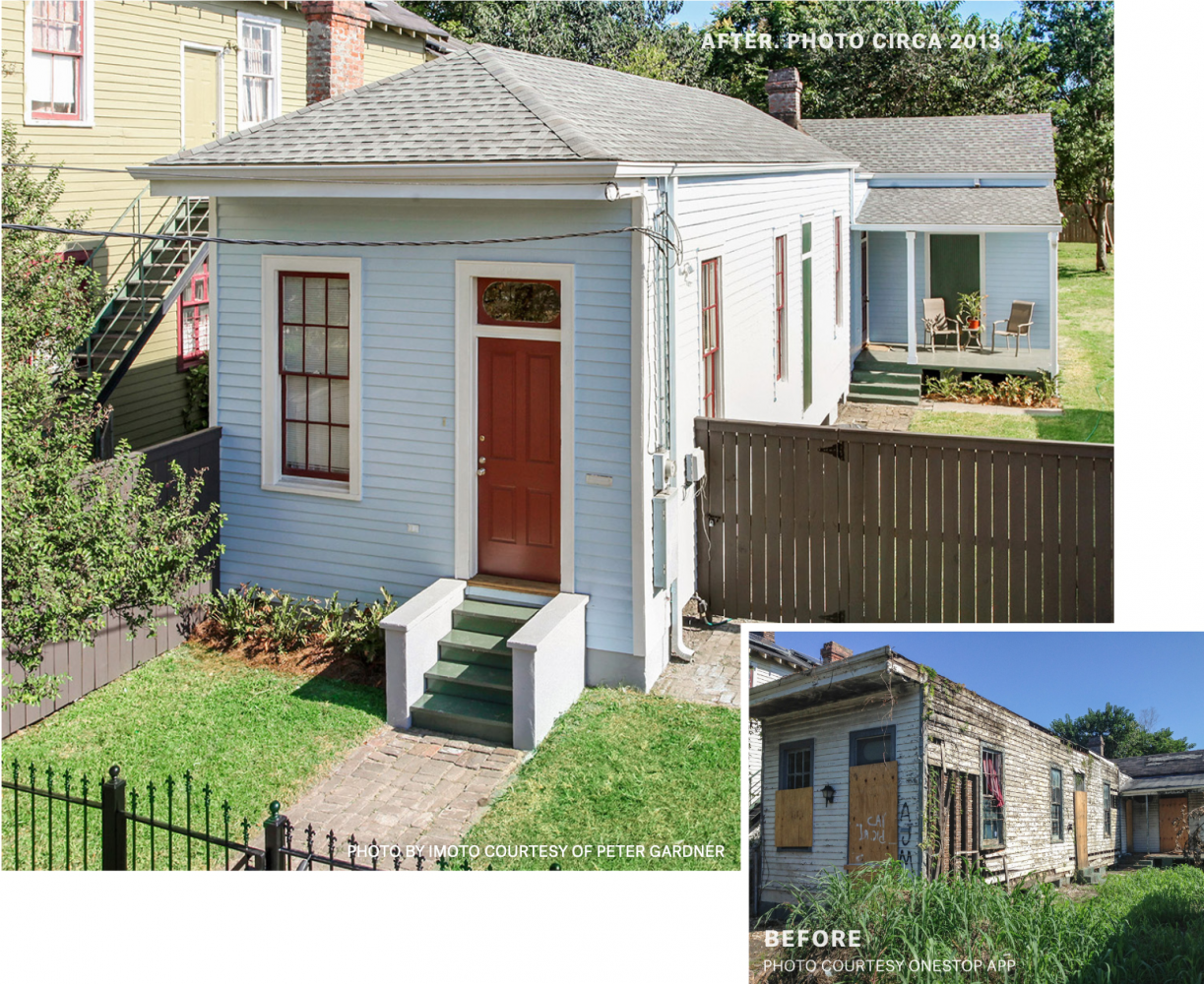
THREAT:
This shotgun house was flagged for demolition in 2013 by the New Orleans Office of Code Enforcement.
STATUS:
Renovated in 2014 and sold as a primary residence.
STORY:
Likely constructed between 1870 and 1880, the single shotgun with a dogleg wing at the rear had a long list of citations for minimum property maintenance before Peter Gardner of Gardner Development acquired it at the 11th hour. “We took on 2327 Conti because it was on the same block as some other projects we were working on,” Gardner recalled. “It was by far the worst property on the block. If nothing was done with the property, it would have continued to bring down everything else around it, and made it harder to rent out the properties we had already completed.”
Photos from surveys conducted after Hurricane Katrina of New Orleans’ National Register historic districts show the home with peeling paint, missing shingles and waist-high weeds nearly enveloping a car parked in the lawn. Gardner’s own 2013 pictures show more damage wrought in the intervening years: loose gutters finally collapsed; weatherboards fell, revealing the plaster and lathe of interior walls; and curtains flapped through broken window panes. Nevertheless, Gardener saw the house not merely as an eyesore but as an opportunity. Not only was it more than a century old, but the house sat on a large key lot.
Despite the lack of care shown it, the house had multiple owners. Tracking them all down to negotiate a purchase proved challenging. Meanwhile, code enforcement violations continued to mount, and the city initiated a process to demolish the property. Gardner closed the deal just in time to avert demolition. Having navigated a metaphorical minefield, he found a literal, albeit rusted, grenade when cleaning the property for renovation. The rehabilitated structure was finally reoccupied in 2014, one year before the Lafitte Greenway opened just a block away.
Today, history is repeating itself on Loyola Avenue in Central City, where Gardener’s team is rehabilitating a modest shotgun single rescued after Code Enforcement posted notice it was in the queue for demolition.
DISTRICTS:
Mid-City Local and National Register Historic Districts; Lafitte Greenway Cultural District.
Advertisement
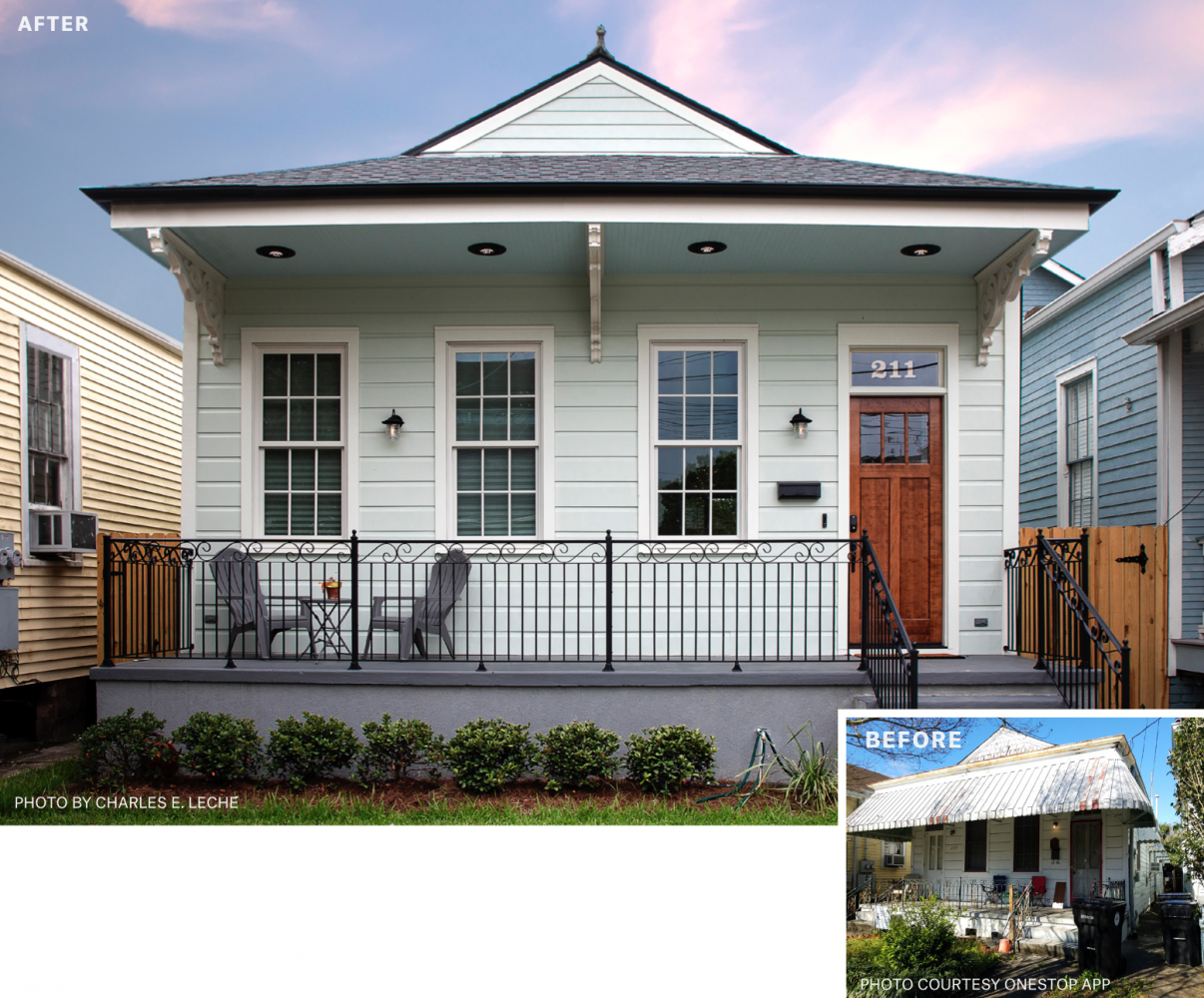
THREAT:
New owners applied for a permit to demolish the house in 2019 after finding significant deterioration.
STATUS:
Renovated in 2020.
STORY:
The childhood home of accordionist and Cajun musician Bruce Daigrepont drew an outpouring of support when it appeared on the Historic District Landmarks Commission agenda for possible demolition early last year. New owners were unaware of its musical provenance until sitting down with Elliot Perkins, the commission’s executive director. “We originally applied for a demolition permit just to see and start the conversation with HDLC,” one of the homeowners said recently. “Elliot was very helpful and very kind to sit down with us and chat. The structure is possibly from 1900. We had no idea how old it was.”
The homeowners decided to take a leap and renovate, hiring Adamick Architecture and Titan Construction. It was far from a simple project, as termites had substantially damaged not only structural members but even wooden window frames. The owners found inspiration and resolve, however, by removing a mid-20th century addition that had obscured the historic facade: “The metal awning on it really hid the beauty and age of the house. Once we removed it, that was the ‘aha’ moment,” the homeowner said. “You could really see the beauty.”
The double-to-single renovation included a camelback addition, sited appropriately far back to garner the required Certificate of Appropriateness from the HDLC. More challenging, however, was bringing the first floor into compliance with elevation standards in the city code. A substantial renovation can trigger compliance requirements, and rather than pursue a variance on historic grounds, the owners opted to elevate 18 inches to ensure the property would remain safe from flooding.
“As a builder, we are entrusted with the single largest investment a person will ever make,” said Stephen Fleishmann of Titan. A complex project like this confronts owners with “a barrage of decisions,” he explained, and in this case the “dream clients [were] very engaged, very accessible.”
The extra clearance required alteration of the original chimneys but allowed replacement of significantly deteriorated piers and facilitated plumbing repairs. The end result, says architect Alec Adamick might not be textbook preservation, but it revealed a historic facade and maintained the consistent scale and historic forms of this Mid-City block.
DISTRICTS:
Mid-City Local and National Register Historic Districts; Museum-City Park Cultural District.
Advertisement
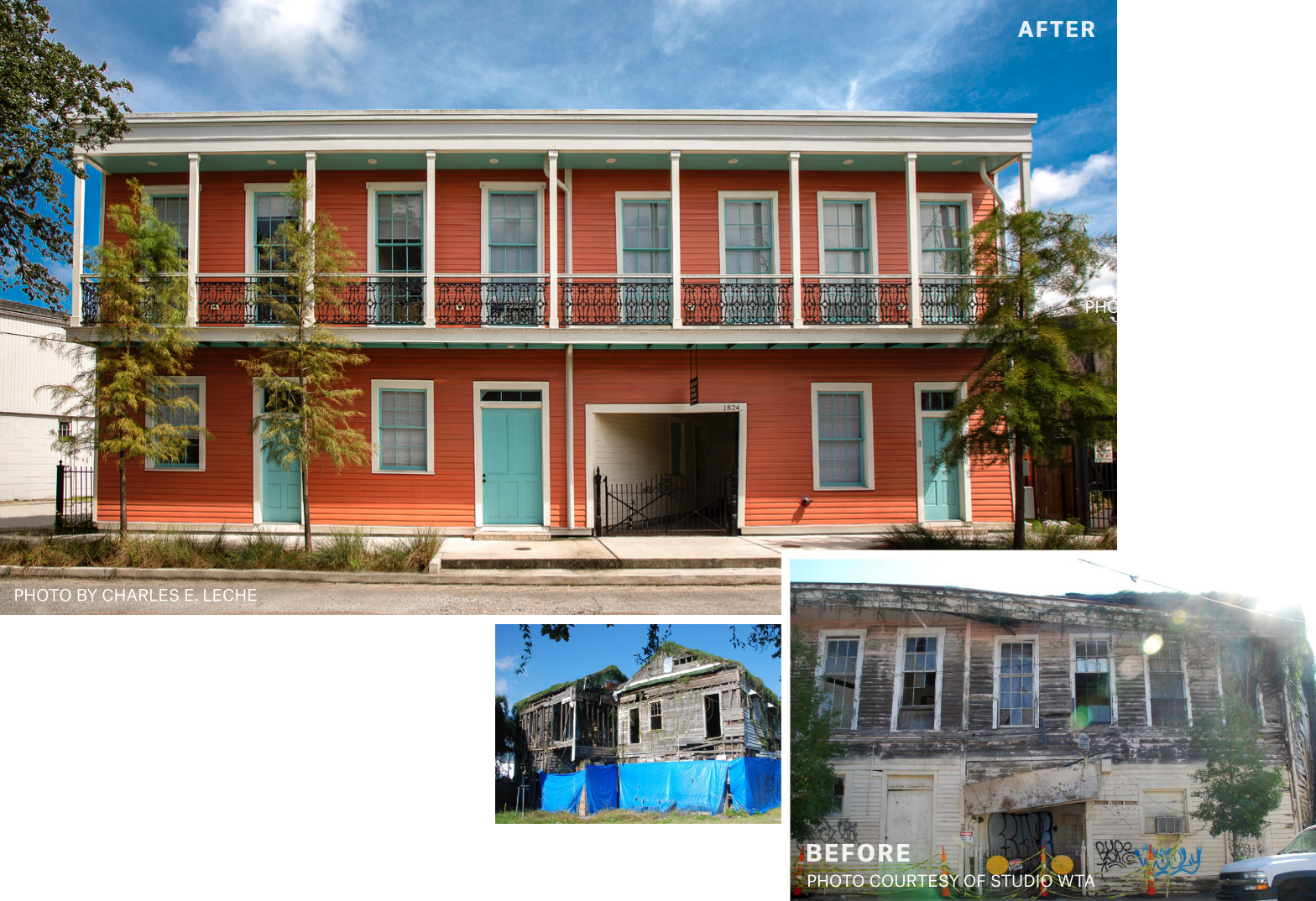
THREAT:
Previous owners filed for a demolition permit in 2013 but withdrew their request.
STATUS:
Restored in 2017.
STORY:
A wood and cast-iron balcony hugs the facade of this tidy, brightly painted building overlooking two-block-long Sophie Wright Place. Built in 1857 as a pair of townhomes with trapezoidal plans, the building is located a short walk from Coliseum Square. It also was a short walk from Magazine Market in 1879 when a bakery owner conjoined the two adjacent buildings and placed ovens in the rear yard. The ground-floor carriageway is a vestige of the time when supplies and baked goods were carted through the building.
By 2013, the building had deteriorated to such an extent that the First Spanish American Baptist Church, which acquired it in 1989, applied for a permit to demolish the structure. The congregation had long aspired to rehabilitate the building but struggled to marshal the funds. The solution, as it turned out, was not to demolish the building but to find a preservation-minded buyer — one able to restore and use the structure without its rear yard area, which the church wanted to retain. The church found such buyers in Elizabeth Mossop and Wes Michaels, landscape architects seeking a new office for their firm, Spackman Mossop Michaels.
The drama wasn’t over after they acquired the building, however. A strong spring storm did further damage while they were awaiting a permit to stabilize the building, prompting one official to consider it a hazard. “The city was going to demolish it,” said Michaels, who recalled that he received a demolition notice on a Saturday. “I ended up working at HiVOLT Coffee all day that Monday to keep an eye on the building. The crew did come out, and I had to go explain to them not to demolish it.”
The building’s restoration involved replacing a significant amount of damaged or missing lumber, but architects at Studio WTA stayed faithful to historic details, stripping away a series of 20th century metal awnings while keeping the arrhythmic sizing of ground-floor openings. The cast-iron railing in the balcony borrows details from the ironwork formerly braced within the tall second-story windows. Contractor A-J-K Renovations completed the transformation in 2018.
“We really enjoy it,” Michaels said of the results. “We originally planned on a very open floor plan but the SHPO (State Historic Preservation Office) required that we keep some of the original walls to qualify for historic tax credits. … It has turned out to be a really good thing with COVID. It’s also better for the sound volume in the office.”
Though there is no longer a public market down the street, there are plenty of shops and restaurants nearby, and the lively location is one more reason the firm’s employees love its historic headquarters. Read Preservation in Print articles from 2016 and 2018 for more details on this building’s dramatic journey.
DISTRICTS:
Lower Garden District Local and National Register Historic Districts; Lower Garden District Cultural District.
Advertisement

THREAT:
Previous owners filed for a demolition permit in 2017 along with plans for a new house, but withdrew their requests.
STATUS:
Restored in 2018.
STORY:
Set well back from the sidewalk, this circa-1850 Creole cottage was shrouded in vegetation when a prior investor-owner filed for a demolition permit in 2017. Faced with mounting citations from Code Enforcement, the owner sought to demolish the property and applied to build a new house on the lot. This move raised the hackles of the Lower Garden District Association, which was founded in 1972 as the Coliseum Square Association. Members had witnessed amazing restorations of historic homes in their neighborhood as well as the loss of long-neglected properties (including a circa-1900 double gallery house next door to 2119 Constance St., which has since replaced).
A member alerted Jane Murdock, a native daughter of the neighborhood who has overseen numerous renovations around the city, pleading with her to rescue the building. “I called the owner and told him: ‘The neighborhood isn’t going to let you tear this down. Why don’t you sell it to me and let me fix it up?’ ” she recalled. Within a few months, she had not only purchased the property but secured a renovation permit. While the building was structurally stable, it required new weatherboards, gutters, roofing and soffit repair on the facade. Inside, the house got new plumbing, drywall and an HVAC system.
“I have a mental illness, and it’s old buildings,” Murdock joked. “I’ve probably renovated 15 or 16 buildings in that condition.” Turning serious, she explained the importance of state incentives — “It was viable with historic tax credits” — and extolled the talented and hard-working craftspeople who performed much of the work. “I have a crew of a couple amazing carpenters who specialize in old stuff.”
Today, potted ferns hang between the millwork brackets that Murdock’s team replaced along the façade, and an iron table and chairs sit on the narrow front porch. Murdock relishes seeing life return to old places, explaining, “I only do empty buildings. I don’t want to move people out.”
Equally gratifying was getting to know the seniors living in a housing facility on the campus of St. Mary’s Assumption Catholic Church, some of whom have grown up in the area. “The nicest thing about the building on Constance,” Murdock recalled, “was all those old people who live across the street. The guys sit out there on those steps and chat. They had so much fun renovating the house with me. It was like a block party every day.”
DISTRICTS:
Lower Garden District National Register and Local Historic Districts, Lower Garden District Cultural District.
Advertisement
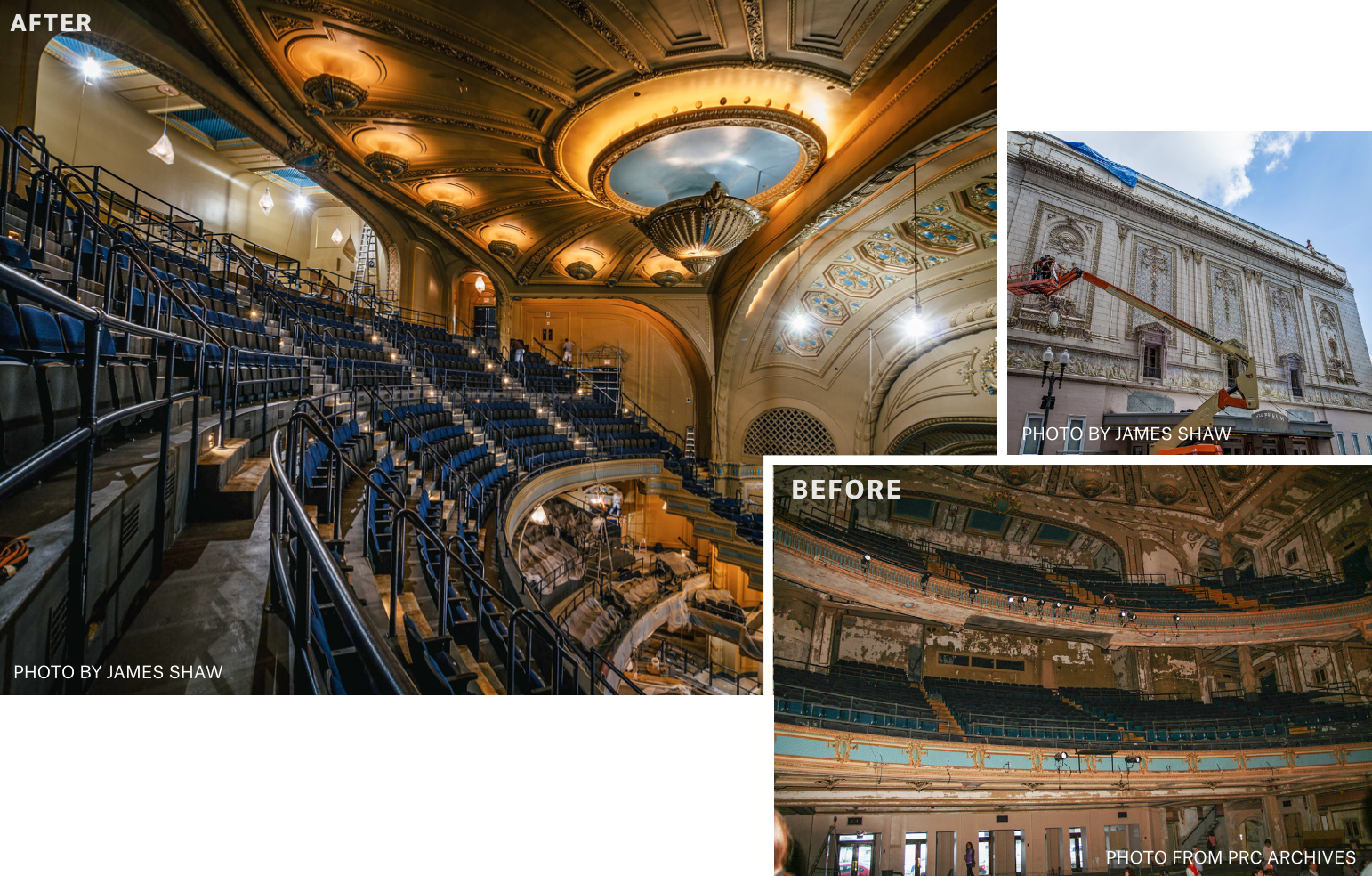
THREAT:
A previous owner applied to demolish the building in 1975; another owner was cited for demolition by neglect after Hurricane Katrina.
STATUS:
Twice restored. Home to the Louisiana Philharmonic Orchestra, the symphony now streams socially distanced concerts from the venue.
STORY:
Next year, the Orpheum Theater will celebrate a century of entertainment. Construction on the Beaux Arts-style building designed by Samuel Stone and G. Albert Lansburgh commenced in 1918, and the first performance was held in 1921. George Burns, the Marx Brothers and Harry Houdini were among the early Vaudeville acts held there. Eventually, the Orpheum became a movie palace, and in the 1980s, it was renovated to host the Louisiana Philharmonic Orchestra.
The Orpheum has twice been saved from atrophy and talk of demolition. It was front-page news when, in 1979, real estate investor Wilson Abraham withdrew his appeal for a demolition permit following several months wrangling with City Councilman Jim Singleton. Abraham optioned the property to build a hotel on the site, but was reportedly convinced that donating the theater to a nonprofit could result in a substantial tax break. It would be another decade before symphony boosters completed renovations and raised the curtain.
Though not located within a local historic district, the Orpheum is a local landmark and was listed on the National Register of Historic Places in 1982. The building suffered greatly in the floods after Hurricane Katrina, with water in the basement destroying instruments and equipment. A succession of owners entertained plans of renovating the Orpheum, but it languished. Previous owners received a demolition by neglect citation in 2009. They managed to seal and secure the building, but it was not until ERG Enterprises, the investment firm led by surgeon Dr. Eric George, stepped in that the Orpheum was restored and reopened.
“Restoring the Orpheum to the community of New Orleans remains one of the more important endeavors in my career as an entrepreneur,” George said. “By reopening the theater in 2015 after a full restoration, our community could once again experience the magic and nostalgia of the theater.”
Over the decades, owners and entertainers have sometimes struggled to draw crowds through the theater’s doors. This year, however, has presented a new challenge by forcing ERG and the LPO to keep the crowds away during the pandemic. The orchestra has held on to patrons by streaming concerts from the venue, with musicians spread six feet apart. “Like many businesses, especially those in the hospitality sector, the Orpheum Theater has been severely impacted by COVID-19,” George said. Canceled musical performances and restrictions on the size of private gatherings have “placed a significant financial burden on theaters and venues across the U.S.,” he added.
With no certainty as to when live performances and events can resume, George fears many venues won’t survive. However, he is bullish on the Orpheum: “We will once again offer a one-of-a-kind destination for entertainment in our remarkable city. Amid all the uncertainty, that remains absolute. … That sense of purpose and responsibility lives on.”
DISTRICTS:
Lower Central Business District National Register Historic District, Downtown Development District; though not located within a local historic district, the Orpheum is a local landmark
Nathan Lott is PRC’s Advocacy Coordinator & Public Policy Research Director.
Advertisements




